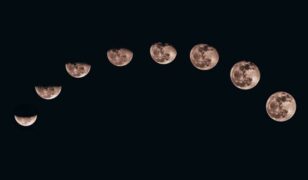On January 6, the National Geospatial-Intelligence Agency announced five winners in its $50,000 global competition to search geographic areas and accurately identify a specific shape.
The Circle Finder competition sought novel automated approaches to detect, delineate and describe circular-shaped features varying in size and physical composition in satellite imagery. Examples include agricultural irrigation areas, fuel storage tanks, buildings, traffic circles and fountains.
“NGA is always seeking new and innovative solutions to forward the geospatial tradecraft,” said Jack Brandy, NGA’s project manager for the challenge. “I’m very pleased with the results of the competition and how quickly the solver community was able to tackle the problem.”
Submissions required a working algorithm and white paper description of the solution. Solvers were able to submit and test their code solutions, view their quantitative score and participate in a leaderboard indicating solver rank. The winners were determined on accuracy rank of their submission.
The competition received 27 submissions from U.S. and international innovators in industry and academia.
The five winners and the technical descriptions of their machine learning solutions are:
- 1st Place: Selim Seferbekov– $20,000
- Seferbekov’s winning solution approached the challenge as a binary segmentation problem of object body and object contours and used a convolutional neural network (CNN) with a pretrained EfficientNet B3encoder and a U-Net like decoder
- 2nd Place: Matthieu Zins – $10,000
- Zins solution found the Mark R-CNN/Faster R-CNN to be the best approach, with the multispectral information less useful due to time constraints.
- 3rd Place: Vlad Dumitriu– $8,000
- Dumitriu started with a standard object detection with transfer learning to teach a model to find circular shaped features. He used Facebook’s Detectron2 for initial object detection followed with R-CNN.
- 4th Place: Hernan Amiune – $7,000
- Amiune started with Faster R-CNN for the initial object detection, but found mask segmentation for detecting circles less accurate and switched to a ‘circle within the bounding box’ to improve confidence. He then added a dynamic confidence function to better handle the detection and segmentation of the variety of objects encountered.
- 5th Place: Victor Durnov – $5,000
- Durnov used a neural network (NN) similar to UNet, with a pretrained EfficientNet -B2 encoder and watershed algorithms to extend smaller parts of the original image.
Source: NGA








